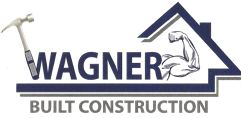Sustainable and Long-Lasting Home Renovations: How to Create Beautiful, Durable Spaces
January 16, 2025
Sustainability is more than just a buzzword in modern home renovations—it’s a philosophy that prioritizes environmentally friendly materials, energy efficiency, and long-lasting design solutions. This article will delve into how sustainable design practices can contribute to both beautiful and durable home renovations, ensuring that spaces not only look great but also stand the test of time.
1. Sustainable Design: A Growing Trend in Home Renovations
Sustainable design is a growing trend that emphasizes environmental responsibility, efficiency, and durability. Renovations that prioritize sustainability often result in homes that are both beautiful and practical, while also reducing the homeowner’s carbon footprint.
- Eco-Friendly Materials:
Many of today’s sustainable materials are also incredibly durable. Bamboo flooring, for example, is not only renewable but also highly durable. Recycled glass countertops and low-VOC paints contribute to a healthier indoor environment while being long-lasting. Choosing sustainable materials reduces the environmental impact and ensures that the renovation lasts for years. - Energy Efficiency:
Incorporating energy-efficient systems and appliances into home renovations is another critical aspect of durability. Double-glazed windows, high-efficiency HVAC systems, and LED lighting are just a few examples of upgrades that make a home more energy-efficient. These improvements can also reduce long-term operating costs. - Passive Design:
A growing trend in sustainable renovations is passive design, which maximizes a home’s natural resources for energy savings. This includes the strategic placement of windows to take advantage of natural light and ventilation, reducing the need for artificial heating or cooling.
2. The Role of Durability in Sustainable Renovations
The goal of sustainable home renovations isn’t just about being environmentally conscious—it’s also about ensuring that homes are built to last. Durability is a core component of sustainability, as it reduces the need for frequent repairs or replacements, which in turn conserves resources.
- Choosing Durable, Long-Lasting Materials:
Materials like recycled steel, ceramic tiles, and concrete are not only sustainable but also incredibly durable. These materials can withstand harsh weather conditions and require minimal maintenance over time. Additionally, opting for materials that are sourced locally reduces the carbon footprint associated with transportation. - Minimal Maintenance:
Sustainability is about reducing resource consumption, and durable materials help achieve this goal by minimizing the need for maintenance. For example, composite decking requires less upkeep than traditional wood decking, and fiber cement siding doesn’t need to be repainted as frequently as wood. - Water Conservation:
Using rainwater harvesting systems, low-flow faucets, and native landscaping not only conserves water but also adds an element of beauty to the home. Sustainable water solutions can enhance both the aesthetic appeal and the durability of the renovation.
3. Combining Beauty with Sustainability: Design Ideas That Last
The fusion of sustainability and design doesn’t have to come at the cost of beauty. In fact, many sustainable design elements are visually striking and add character to a home. Here are several examples of how sustainability can enhance the aesthetic appeal of a renovation:
- Reclaimed Materials:
Reclaimed wood, steel, and other materials offer a rustic, timeless appeal while reducing the demand for new resources. Incorporating reclaimed barn wood or salvaged bricks into your renovation not only adds character but also contributes to a more sustainable design. - Green Roofs and Walls:
Green roofs, which are covered with plants, provide insulation, reduce stormwater runoff, and can create a beautiful, natural feature on your home. Similarly, living walls covered in ivy or other greenery can add beauty while improving air quality. - Indoor-Outdoor Flow:
Sustainable designs often emphasize an effortless flow between indoor and outdoor spaces. This creates a sense of openness and natural beauty, enhancing the overall aesthetic while also reducing the need for artificial lighting or temperature control.
4. Maintenance and Longevity in Sustainable Home Renovations
While beauty and sustainability are integral to modern home design, longevity remains a priority. Sustainable homes are designed to be low-maintenance and built to last, which reduces the frequency of renovations and the consumption of resources.
- Regular Maintenance for Longevity:
Even sustainable homes require periodic maintenance. Regularly cleaning gutters, checking the foundation, and inspecting the roof for damage are all essential steps in maintaining a sustainable and durable renovation. - Long-Term Benefits of Sustainable Renovations:
Beyond the environmental benefits, sustainable renovations typically result in lower operating costs. Homes with energy-efficient systems and long-lasting materials require fewer repairs and less maintenance, ultimately providing a return on investment over time.
Conclusion: The Future of Beautiful, Sustainable, and Durable Home Renovations
Sustainable design practices are no longer optional—they are a key part of creating homes that are not only visually stunning but also built to last. By integrating eco-friendly materials, energy-efficient systems, and long-lasting construction techniques, homeowners can achieve renovations that are both beautiful and durable. The future of home design lies in creating spaces that serve both people and the planet, ensuring that our homes remain functional and beautiful for generations to come.
